View in other NatureServe Network Field Guides
NatureServe
Montana
Utah
Wyoming
Idaho
Wisconsin
British Columbia
South Carolina
Yukon
California
New York
Slender Cottongrass - Eriophorum gracile
State Rank Reason (see State Rank above)
Known from a very few large populations, several smaller populations and a half dozen historical or poorly documented locations. Populations occur on a mix of federal, state and private ownerships in northwest Montana at low to moderate elevations. Populations are vulnerable to any activities that may alter the hydrology of occupied sites.
General Description
Rhizomatous. Stems 25–60 cm. Leaves: V-shaped in cross-section; blades 1–2 mm wide. Inflorescence 25 ascending to nodding, pedunculate spikelets; bract 1, leaf-like, shorter than the inflorescence. Spikelets 15–35 mm long in fruit; lowest scale ca. as long as the spikelet. Fertile scales brown to black with pale margins, 4–7 mm long. Bristles becoming tawny-brown. Achene 2–3 mm long, apiculate. (
Lesica et al. 2012. Manual of Montana Vascular Plants. BRIT Press. Fort Worth, TX).
Phenology
Flowering in late June - early July.
Diagnostic Characteristics
Eriophorum viridicarinatum and the more common E. polystachyon have two or more leaf-like bracts subtending the inflorescence, at least one of which is longer than the spikelets. Both of these species also have black seeds and leaves that are flat for most of their length.
Species Range
Montana Range
Range Descriptions
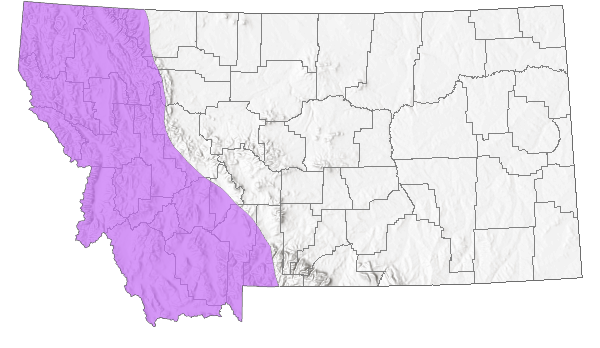
 Native
Native
Range Comments
Circumboreal south to CA, NV, UT, CO, IL and PA (Lesica et al. 2012. Manual of Montana Vascular Plants. BRIT Press. Fort Worth, TX).
Observations in Montana Natural Heritage Program Database
Number of Observations: 65
(Click on the following maps and charts to see full sized version)
Map Help and Descriptions
Relative Density
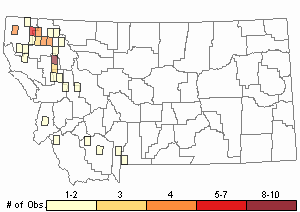
Recency
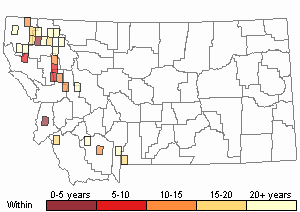

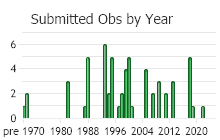
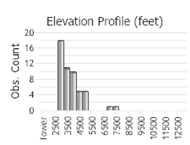 (Observations spanning multiple months or years are excluded from time charts)
(Observations spanning multiple months or years are excluded from time charts)
Habitat
Wet, organic soil of fens from low to moderate elevations.
Ecological Systems Associated with this Species
Threats or Limiting Factors
STATE THREAT SCORE REASON
Reported threats to Montana's populations of Slender Cottongrass are currently assigned as unknown. Potential threats due to noxious species and development need to be substantiated before a threat rank can be assigned (MTNHP Threat Assessment 2021).
References
- Literature Cited AboveLegend:
 View Online Publication
View Online Publication Lesica, P., M.T. Lavin, and P.F. Stickney. 2012. Manual of Montana Vascular Plants. Fort Worth, TX: BRIT Press. viii + 771 p.
Lesica, P., M.T. Lavin, and P.F. Stickney. 2012. Manual of Montana Vascular Plants. Fort Worth, TX: BRIT Press. viii + 771 p.
- Additional ReferencesLegend:
 View Online Publication
View Online Publication
Do you know of a citation we're missing? Lesica, P., M.T. Lavin, and P.F. Stickney. 2022. Manual of Montana Vascular Plants, Second Edition. Fort Worth, TX: BRIT Press. viii + 779 p.
Lesica, P., M.T. Lavin, and P.F. Stickney. 2022. Manual of Montana Vascular Plants, Second Edition. Fort Worth, TX: BRIT Press. viii + 779 p.
- Web Search Engines for Articles on "Slender Cottongrass"





